Bone China Vs Porcelain:A Detailed Comparison
Time of issue: 2024-04-01 11:26:54- Bone China Vs Porcelain : Definition
- Bone China Vs Porcelain : Production Process
- Bone China Vs Porcelain : Main Differences
- Bone China Vs Porcelain: Advantages Of Bone China
- Bone China Vs Porcelain: Advantages Of Porcelain
- Bone China Vs Porcelain : Maintenance And Care
- Bone China Vs Porcelain : Which One Is Better ?
- Conclusion
- Frequently Asked Questions Of Bone China Vs Porcelain
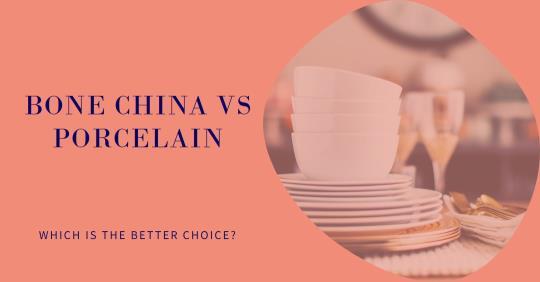
Bone china and porcelain are both widely used materials for dinnerware and tableware. Bone china is a type of ceramic that is made from a mixture of clay, feldspar, and bone ash, while porcelain is made from a mixture of clay and feldspar that is fired at a higher temperature than bone china.
The addition of bone ash to bone china makes it more expensive and durable, while the firing process for porcelain gives it a harder finish but makes it more prone to cracking and chipping. Both types of dinnerware come in a variety of designs and can be used for everyday use or special occasions.
Bone China Vs Porcelain : Definition
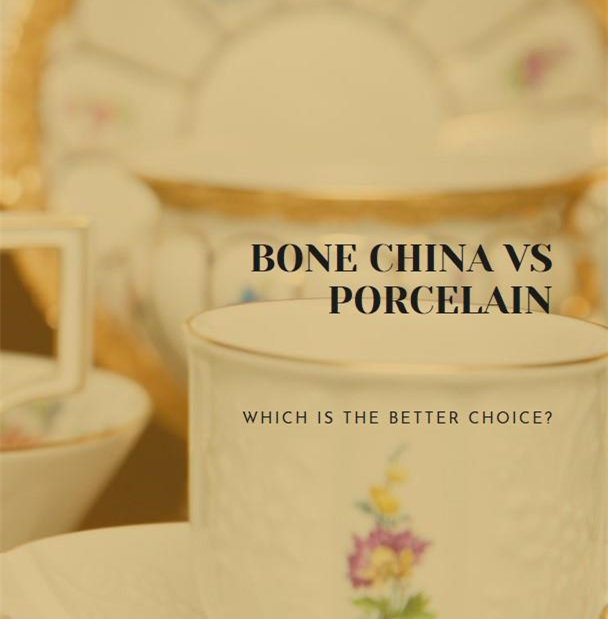
What Is Bone China?
Bone china is a type of porcelain that is known for its high levels of whiteness and translucency, as well as its considerable strength. It is distinguished from other porcelain by its composition, which includes bone ash, feldspathic material, and kaolin. The addition of bone ash in its production gives bone china its unique characteristics, including a milky white appearance and a specific level of translucency that can be seen when the material is held up to the light.
Bone china is highly valued for its elegance and strength, making it a popular choice for fine tableware and decorative objects. Its origins date back to the 18th century in Britain, and it continues to be appreciated for its beauty and durability today.
What Is Porcelain?
Porcelain is a ceramic material celebrated for its durability, purity, and aesthetic appeal. It is crafted from a fine mixture of kaolin (a white clay), feldspar, and quartz, fired at high temperatures. This process results in a vitrified, or glass-like, quality that gives porcelain its characteristic translucency and deep, resonant sound when struck. Porcelain can be finished with a variety of glazes, allowing for a wide range of artistic expression.
Originating in China over a thousand years ago, porcelain has since become a global symbol of refinement and cultural heritage, widely used in both artistic and practical applications, from intricate art pieces to everyday dinnerware and tiles.
Bone China Vs Porcelain : Production Process

The main difference between bone china vs porcelain is the firing temperature. Porcelain is fired at a higher temperature than bone china, resulting in a harder and more durable finish. However, porcelain is more prone to chipping and cracking than bone china.
Base Materials Used
Bone china and porcelain are both made using different kinds of raw materials. Porcelain, also known as china, is typically made from kaolin, feldspar, and quartz. On the other hand, bone china is made by adding a significant amount of bone ash to the base materials used for porcelain. Bone ash is derived from animal bones, usually cattle bones. This addition of bone ash gives bone china its distinct ivory color and translucency.
Firing Temperature
Another notable difference between bone china and porcelain is the firing temperature. Porcelain is fired at a higher temperature of around 1,200 degrees, which makes it dense and hard, but also makes it more prone to cracking and chipping. Bone china, however, is fired at a lower temperature of around 1,000 degrees, which gives it a softer texture and makes it less likely to chip or break.
Strength And Durability
When it comes to strength and durability, bone china and porcelain differ greatly. Porcelain is known for its durability and is often used for everyday dishes and commercial settings. Bone china, on the other hand, is much more delicate and fragile due to its softer texture.
However, bone china is still highly regarded for its beauty and elegance, which makes it a popular choice for special occasions and formal dining. In conclusion, the production process for bone china and porcelain differs significantly, from the base materials used to the firing temperature and resulting strength and durability.
While both have their unique qualities and uses, it ultimately comes down to personal preference and intended use.
Bone China Vs Porcelain : Main Differences
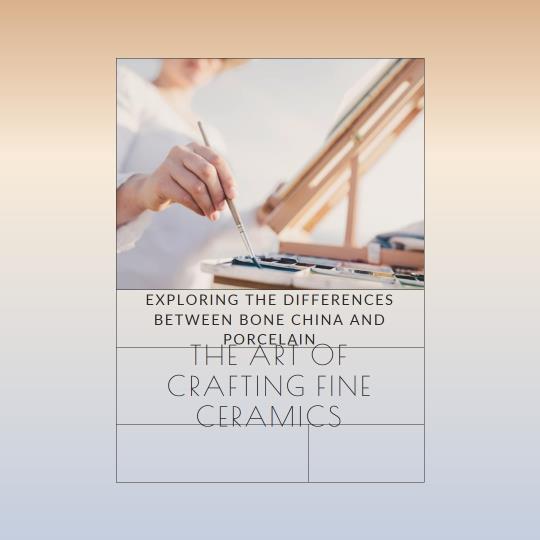
In terms of Bone China vs Porcelain, one main difference is that bone china contains bone ash, while porcelain does not. Additionally, porcelain is fired at a much higher temperature than bone china, making it harder and more durable, but more prone to cracking and chipping.
Appearance and Design: The Aesthetic Divide
One of the primary aspects where bone china and porcelain diverge is in their appearance and design aesthetics. Bone china, known for its inclusion of bone ash, sports a naturally creamy hue. This unique composition lends bone china a soft, almost ethereal translucency, setting it apart from its counterparts. Porcelain, in contrast, boasts a pure white coloration with a glass-like surface that splendidly reflects light. While both materials can feature elaborate and intricate designs, bone china typically exudes a more delicate charm, whereas porcelain offers boldness and vibrancy in its presentation.
Weight and Density: A Matter of Substance
The physical characteristics of bone china and porcelain further distinguish them. Bone china is celebrated for its lightweight and fine structure, which, despite its seeming delicacy, contributes to its allure. On the other hand, porcelain is recognized for its density and heft. This inherent robustness renders it less susceptible to chipping and cracking, offering a practical advantage in terms of durability.
Price and Value: Evaluating Worth
When considering the cost, bone china often carries a higher price tag, attributed mainly to the inclusion of bone ash in its composition. However, a higher price does not necessarily equate to greater value. The worth of both bone china and porcelain is influenced by factors such as brand reputation, design intricacy, and the rarity of the piece. Therefore, the decision between bone china and porcelain should be guided by personal preference, intended use, and budget considerations.
Here's a concise table summarizing the main differences between Bone China vs Porcelain:
| Feature | Bone China | Porcelain |
| Composition | Contains bone ash | Does not contain bone ash |
| Appearance | Creamy color, soft and translucent | Pure white, glass-like finish |
| Design | Delicate look | Bolder and more vibrant designs |
| Weight | Lighter and thinner | Denser and heavier |
| Durability | Delicate but durable | More durable, less prone to chipping |
| Price | Generally more expensive | Less expensive |
| Value Factors | Brand, design, rarity | Brand, design, rarity |
Bone China Vs Porcelain: Advantages Of Bone China
Bone china is often compared to porcelain due to its elegance and durability. The main difference between the two is that bone china is made by using bone ash, giving it a natural ivory color, translucency, and more chip-resistance compared to porcelain.
Elegance And Delicacy
Fine bone china is a popular choice for its elegance and delicacy. It is thinner and lighter than porcelain, which makes it easier to handle and more comfortable to drink from. The bone ash content in the clay gives it a translucency that adds to its sophisticated appearance, making it an excellent choice for formal occasions such as weddings, banquets, or high-end restaurants. The delicate nature of bone china can also make it a perfect gift for loved ones, as it exudes luxury and refinement.
Translucency And Whiteness
Bone china, celebrated for its exceptional translucency and pure whiteness, is crafted from high-quality clay and animal bone ash, fired at high temperatures to achieve a nearly translucent material. Its distinct white color enhances the presentation of food and drinks, making it a preferred choice for fine dining.
Beyond its aesthetic appeal, bone china combines delicacy with durability and lightness, ideal for both special occasions and everyday elegance. This makes bone china a timeless addition to any tableware collection, favored for its sophisticated appearance and practical resilience.
Bone China Vs Porcelain: Advantages Of Porcelain
Porcelain is more durable than bone china due to being fired at a higher temperature. While bone china has unique shades of color due to the cow bone ash material, porcelain is more resistant to chipping and cracking.
Durability And Resilience
Porcelain dishes are well known for their durability and resilience. This is because porcelain is fired at high temperatures making it harder, denser, and more durable than bone china. Due to its resilience, porcelain dishes are less prone to chipping and cracking compared to bone china. With proper care, porcelain dinnerware can last for many years, making it a great investment for your home.
Heat Retention
Porcelain is an excellent conductor of heat, which means it retains heat for a longer time compared to other materials. This makes it perfect for serving hot foods and beverages, such as soup and tea. Porcelain cups also retain heat, making them perfect for serving hot drinks such as coffee and cocoa. Additionally, porcelain dishes can be used in the oven, microwave, and fridge.
They are also safe for use in the dishwasher, making porcelain dishes a convenient choice for busy households. In conclusion, porcelain dishes have many advantages over bone china. They are more durable, resilient, and have excellent heat retention properties. These qualities make porcelain a great choice for households that want long-lasting and convenient dinnerware.
Bone China Vs Porcelain : Maintenance And Care
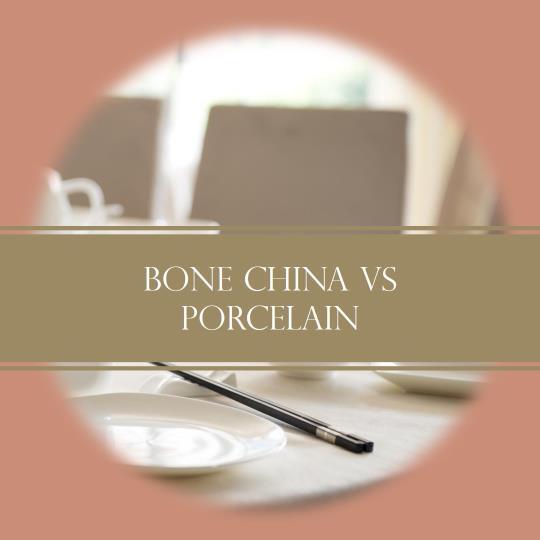
Bone china and porcelain are two types of fine dinnerware, but they require different care and maintenance. Unlike porcelain, bone china is made with added bone ash, giving it a more translucent appearance. Porcelain is thicker, denser, and tougher than bone china, making it more durable but also prone to cracking and chipping.
Bone china and porcelain are both elegant and delicate materials that require proper care and maintenance to preserve their appearance and value. Here are some tips for washing, cleaning, storing, and handling both bone china and porcelain.
Washing And Cleaning Tips
When it comes to washing and cleaning bone china and porcelain, it's important to be gentle and avoid using abrasive materials or harsh chemicals. Here are some tips:
- Hand wash your bone china and porcelain using a mild dish detergent and warm water.
- Use a soft sponge or cloth to avoid scratching the surface.
- Never use metal scrubbers or abrasive materials that can damage the finish.
- For stubborn stains, soak the item in warm water before gently scrubbing with a soft brush or cloth.
- Avoid using bleach, harsh detergents, or acidic cleaners that can damage the material.
Storing And Handling Advice
Proper storage and handling of bone china and porcelain are crucial to prevent damage or breakage. Here are some tips:
- Store your bone china and porcelain in a dry, dust-free environment, away from direct sunlight or heat sources.
- Use padded dividers or soft cloth to separate plates and other items to prevent scratching or chipping.
- Avoid stacking items too high to prevent toppling or damage.
- Handle your bone china and porcelain with care, always using both hands and avoiding any sudden movements that can cause breakage.
- If displaying your items, use secure and stable stands or holders to prevent accidents.
With these maintenance and care tips, you can keep your bone china and porcelain looking beautiful and valuable for years to come.
Bone China Vs Porcelain : Which One Is Better ?
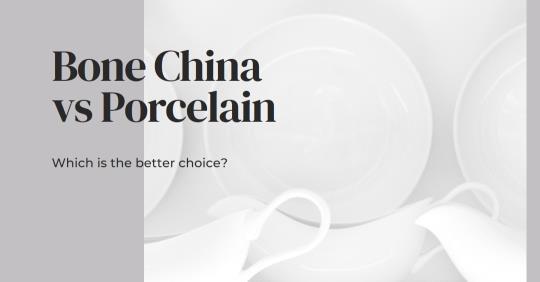
When it comes to selecting fine dinnerware, the competition between bone china vs porcelain can be fierce. Both materials are elegant, timeless, and have a rich history in the world of ceramics. However, they differ significantly in terms of durability, translucency, and price. In this post, we'll highlight the key differences between bone china and porcelain to help you make a well-informed decision when choosing between them.
Factors To Consider
Before diving into the differences between bone china and porcelain, it's essential to consider the factors that can influence your decision. Here are some critical factors to bear in mind:
- Budget
- Occasion
- Functionality
- Design preferences
Understanding your preferences and needs in these areas will help you make a sound choice with less confusion.
Personal Preferences And Tastes
When deciding between bone china vs porcelain, it can come down to your personal taste and aesthetic preferences. On one hand, bone china tends to be more delicate, fine, and translucent, while porcelain has a non-translucent, hard, and durable finish. Bone china is often more expensive and is associated with a more luxurious feel, making it ideal for special occasions. Porcelain, on the other hand, is more practical for everyday use and tends to have more simplistic designs.
When considering your personal preferences, ask yourself how you would like the dinnerware to function in your household based on style, durability, and how often you plan to use it.
Conclusion
To sum up, bone china vs porcelain have their own unique qualities and differences. Bone china is stronger due to the addition of bone ash, while porcelain is denser and more durable due to higher firing temperatures. As for aesthetics, bone china often has a more translucent appearance and is typically more expensive.
Ultimately, the choice between bone china vs porcelain depends on personal preference and intended use. Whether it's for everyday use or a special occasion, both materials can provide a touch of elegance and sophistication to any table setting.
Frequently Asked Questions Of Bone China Vs Porcelain
Question: Can Bone China Go In The Dishwasher?
Answer: Yes, bone china can usually go in the dishwasher as long as it is loaded carefully, without pieces touching each other to avoid scratching, and the dishwasher is not overloaded. It is safe because bone china is durable and does not chip easily, unlike porcelain which is fired at a higher temperature and is more prone to chipping and cracking.
Question: Is Bone China More Valuable?
Answer: Bone china tends to be more valuable than fine china due to the use of cow bone ash in its production, which creates unique shades of color and hues. However, this material wasn't intended to make the china stronger or chip-resistant.
Both bone china and porcelain are fired differently, with porcelain being fired at a higher temperature, making it harder and more durable, but also more prone to cracking and chipping than bone china.
Question: How Can You Tell Real Bone China?
Answer: To identify real bone china, check the backstamp on the plate which usually has the manufacturer's name, the pattern name, and the date. If it says "Fine China" or "Bone China," it is most likely the real thing.
RECENT POSTS
- The Benefits of Wholesale High-Quality Ceramic Products for Retailers
2025-12-17
- Can You Make an Ashtray with Air Dry Clay? Pros, Cons, and Safer Alternatives
2025-12-17
- The Impact of Ceramic Materials in Energy-Efficient Buildings: Benefits and Applications
2025-12-04
- Top 7 Ceramic Cookware Health Benefits: Why It’s a Safer Choice for Your Kitchen
2025-12-04
- How to Clean Ceramic Planters and Improve Their Lifespan?
2025-11-17
- 15 Best Ceramic Holiday Gift Ideas for 2025: Thoughtful, Elegant & Heartfelt
2025-11-17
- Stoneware vs Porcelain vs Earthenware: Quick Decision Guide
2025-10-09
- Are Ceramic Glazes Food Safe? The Truth Behind the Shine
2025-10-09










